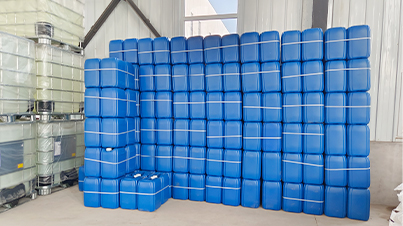Exploring the Applications and Benefits of Isothiazolinone at 1.5% Concentration
Understanding Isothiazolinone A Closer Look at 1.5%
Isothiazolinones are a class of chemical compounds that are widely used as biocides and preservatives in various industrial and consumer products. These compounds are renowned for their effectiveness in preventing the growth of bacteria and fungi, making them prevalent in paints, adhesives, personal care products, and even household cleaners. Among the various isothiazolinones available, a notable concentration is 1.5%, which plays a crucial role in maintaining product stability and longevity.
The Science Behind Isothiazolinones
Isothiazolinones derive their name from their molecular structure, which includes a five-membered ring containing both sulfur and nitrogen atoms. This unique arrangement is key to their antimicrobial properties. They disrupt the cellular processes of microorganisms, effectively inhibiting their growth and reproduction. Because of this capability, isothiazolinones are particularly valued in formulations that require long-lasting preservation, ensuring that products remain effective during their shelf life.
Common Applications
The 1.5% concentration of isothiazolinone is commonly utilized in a range of products, including industrial formulations, cosmetics, and cleaning agents. In cosmetic applications, it helps to prevent the spoilage of products like lotions, shampoos, and makeup, where microbial contamination can not only affect the product’s efficacy but also pose health risks to users. In industrial settings, 1.5% isothiazolinone is often incorporated into water-based coatings and adhesives, providing protection against bacterial and fungal growth during production and storage.
Safety and Regulatory Concerns
isothiazolinone 1.5

Despite their widespread use, isothiazolinones have garnered attention regarding safety and potential health risks. In recent years, there has been a growing awareness of allergic reactions, particularly from prolonged exposure to products containing certain isothiazolinones. The most commonly discussed among these is methylisothiazolinone (MIT) and its close relative, chloromethylisothiazolinone (CMIT). Regulatory bodies, including the European Chemicals Agency (ECHA) and the U.S. Environmental Protection Agency (EPA), have evaluated their safety, leading to restrictions on their concentration in cosmetic products in certain jurisdictions.
The 1.5% concentration is particularly significant because it often represents a threshold above which allergic reactions may be more likely. Therefore, manufacturers must carefully consider formulation practices to minimize potential allergic responses while ensuring product efficacy.
Balancing Efficacy and Safety
Manufacturers are faced with the challenge of balancing the need for effective preservation with consumer safety. Many are exploring alternative preservatives and biocides that are less likely to cause adverse reactions, taking into account the preferences of more health-conscious consumers. However, such alternatives may not always provide the same level of protection, which complicates the decision-making process.
As a result, research continues into the development of new preservatives that could replace or complement isothiazolinones, especially in formulations where skin contact is significant. Moreover, advancements in formulation technology are allowing manufacturers to optimize the use of isothiazolinones, applying them in ways that provide antimicrobial benefits while minimizing exposure.
Conclusion
Isothiazolinone at a concentration of 1.5% represents a crucial component in many formulations aimed at preventing microbial growth. While effective, ongoing scrutiny of their safety necessitates that manufacturers remain vigilant in their use. The industry is at a pivotal point where the demand for safer, more natural formulations is growing. As consumers become more aware of the ingredients in the products they use, the dialogue surrounding isothiazolinones and their alternatives will likely shape the future of product formulation. Balancing efficacy with safety will remain a critical aim as we move forward into a landscape increasingly focused on both performance and health.
-
Water Treatment with Flocculant Water TreatmentNewsJun.12,2025
-
Polymaleic AnhydrideNewsJun.12,2025
-
Polyaspartic AcidNewsJun.12,2025
-
Enhance Industrial Processes with IsothiazolinonesNewsJun.12,2025
-
Enhance Industrial Processes with PBTCA SolutionsNewsJun.12,2025
-
Dodecyldimethylbenzylammonium Chloride SolutionsNewsJun.12,2025





